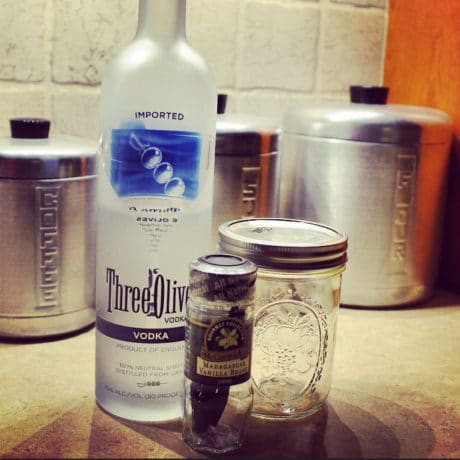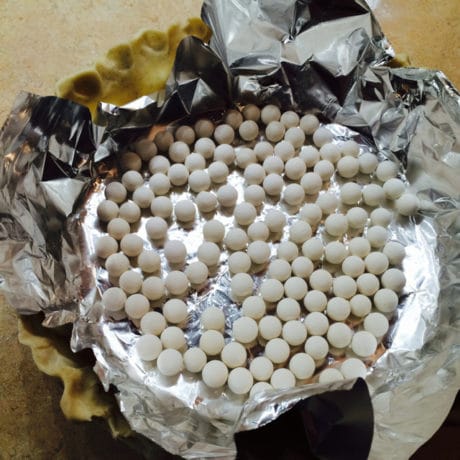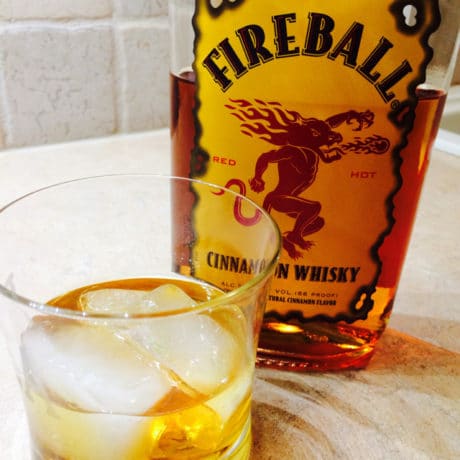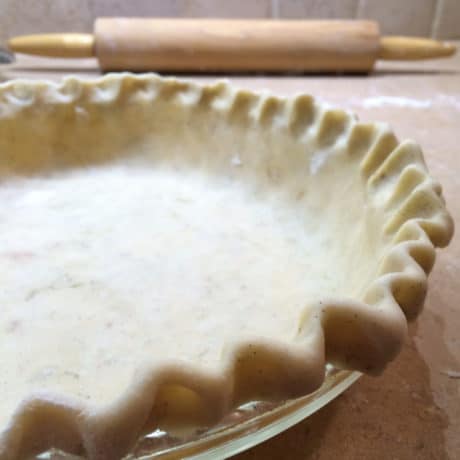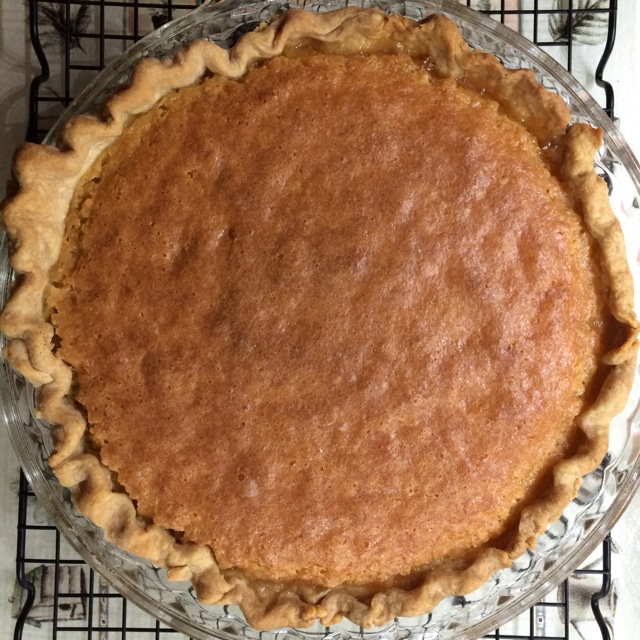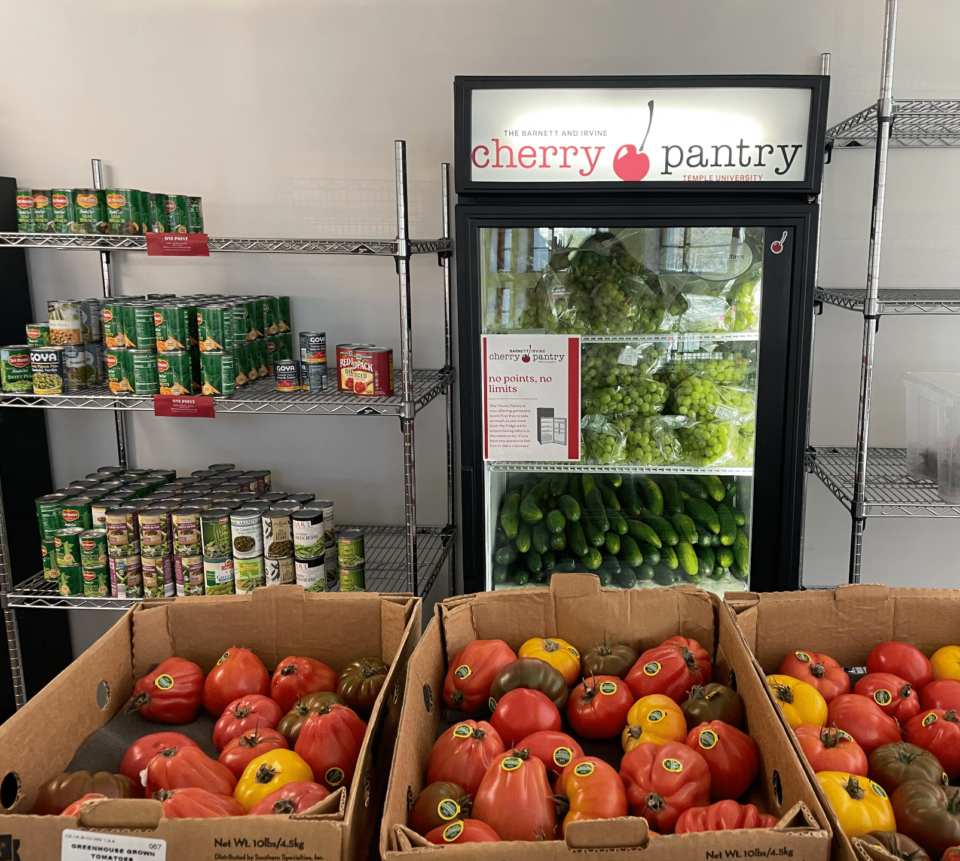I’ve been at this long enough now that people have inquired as to what the next month’s pie will be, and whenever I noted that April would be chess pie, I was met with head tilts. Though I couldn’t tell them what chess pie was, I’d definitely heard of it before. In my search for a recipe, I learned that chess pie is traditionally southern, which is probably why we don’t hear about it much, especially since we have so many delicious PA Dutch pies to be eating.
Because I’m kind of a nerd, I think the name ‘chess pie’ is somewhat interesting. I came across some differing accounts as to how it got its name. Some people think ‘chess’ could be derived from ‘cheese,’ due to some similarities to cheesecake, while others speculate it comes from the pie chest in which pies were stored; but my favorite musing is that it’s just such a simple indulgence that the answer to “What kind of pie is this?” is the answer, “Jes’ pie.” Chess pie.
Recipes for chess pie vary wildly, and I saw flavor enhancements like chocolate or citrus, but because I did those in February and March, respectively, I decided to go a different route. The pie base being a kind of custard, I thought a cinnamon-vanilla version would work well, and I had a bottle of Fireball that I bought under the guise of baking with (but secretly just enjoy drinking). So with Fireball set to be my cinnamon component, I decided to do a vanilla twist on the basic crust I’ve been using…mostly because this crust has been working well for me, and I’m a bit nervous to deviate from something that’s working! So I splurged on some whole vanilla beans, scraped out the caviar from one and mixed it into the dough. The other beans found their way into a jar of vodka to hang out and make vanilla extract.
After the crust had chilled in the fridge for a few hours, I read the rest of the pie instructions and realized I needed to blind bake the crust. Of course, I don’t own pie weights, and had just cooked that bag of dry beans that had been in my pantry for too long. Back into the fridge the crust went while I plotted a visit to Bed, Bath & Beyond.
A few days later, pie weights purchased, I proceeded with the recipe and was shocked to discover that one box of pie weights doesn’t completely cover the bottom of my standard pie plate. What is that about!? Is this why people just use dry beans?
My crust bubbled a bit and the edges sank down, but it wasn’t a complete failure. The filling was a cinch to whip up and into the oven it went. I forgot to snap a pre-bake pic because this happened.
Yes, I occasionally drink Fireball on the rocks. It tastes like liquid Red Hots. Don’t judge.
An hour later, the top was nicely browned and the house smelled wonderful. I let it cool overnight (pie chest-less) and discovered the next morning that the crisp top was akin to creme brulee. Just a tap broke it, and underneath was a delicious creamy custard. The cinnamon-vanilla flavor I was going for was quite subtle but, overall, the pie was well-received by my taste testers.
Next month starts the parade of fruit pies, starting with rhubarb…which is technically a vegetable. My journey continues, but I believe I’m improving. At the very least, my crust-crimping skills are!
Recipe: Cinnamon-Vanilla Chess Pie
adapted from Dallas Duo Bakes
Ingredients:
-
1 pie crust (I used this recipe, with the addition of caviar from 1 vanilla bean)
-
2 cups sugar
-
2 Tbsp. cornmeal
-
1 Tbsp. all-purpose flour
-
¼ tsp. salt
-
½ cup butter, melted
-
3 Tbsp. Fireball Whiskey
-
1 Tbsp. milk
-
1 Tbsp. white vinegar
-
½ tsp. vanilla extract
-
4 large eggs, lightly beaten
Instructions
- Fit pie crust into a 9-inch pie plate, line pastry with aluminum foil and fill with pie weights or dried beans.
- Bake at 425 degrees F for 4-5 minutes. Remove weights and foil; bake 2 minutes more or until golden. Cool.
- Stir together all ingredients, and pour into pie crust.
- Bake at 350 degrees F for 50-55 minutes, shielding edges with aluminum foil after 10 minutes to prevent excessive browning. Cool completely on a wire rack.
- Photography: Melissa Woodley
